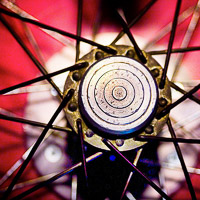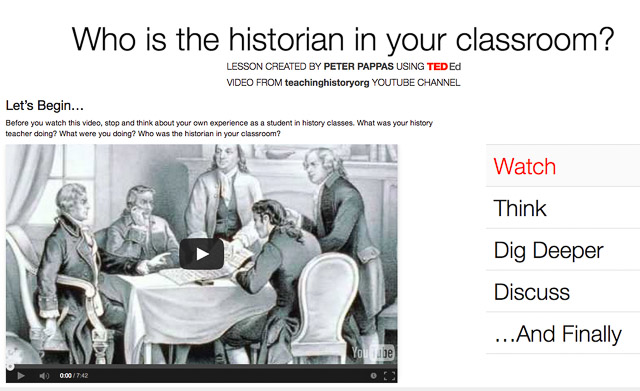Over the last few weeks my University of Portland EdMethods students have been designing lessons in historical thinking skills based on the work of Sam Wineburg and the Stanford History Education Group (SHEG). They focussed on three key skills – Sourcing, Contextualizing and Corroborating.
The lessons were designed in a shared Google presentation. Below you will find the project workflow and links to each lesson as an individual blog post.
Flip the introduction:
I used TEDEd’s video curation tool to turn an existing YouTube and into a flipped lesson introducing historical thinking skills. Students also read Thinking Like a Historian by Sam Wineburg.
Deconstruct the model:
With that background, students spent a portion of our next class deconstructing a few of the assessments found in SHEG’s Beyond the Bubble. They were asked to find three questions that focus on any of these skills: Sourcing, Contextualizing and Corroborating. With their team they explored how the assessments are designed:
- How many historic sources, what types?
- What additional information are students given?
- How many prompts?
- What are students asked to do?
- How is the assessment designed to support the skills?
- Be prepared to share your finding with the whole class.
Design your own lesson:
Students were then assigned to design their own historical thinking lesson based on the Beyond the Bubble assessment model. They used a shared Google presentation to host their lesson. Since not all students were familiar with Google tools, I used SnagIt to create a YouTube playlist: Working with Google Presentation
Guidelines for the lesson included:
- Title slide for your mini-lesson. Make it catchy!
- Your name as author of the mini-lesson on your lesson title
- Target students – by grade level
- Indication of one (or more) of the historic skills to be studied – Sourcing, Contextualization, Corroborating
- One or more historic documents. Text, image and videos can be inserted into the slide. Longer documents can be linked to via URL or saved in Google drive with link to it.
- Source URLs for all documents used
- Guiding questions for students to use with document(s)
- Brief description of how the document(s) and question(s) should reinforce the targeted historic skill(s)
Peer Review / Reflection / Blog post
At our next class, students did some peer editing of each other’s lesson using Google doc’s comment feature. They used the peer feedback to do a final version of their lesson. Students were then asked to write a brief reflection on the process – it could include their take on historic thinking, the specific lesson model borrowed from SHEG, working with a shared Google presentation, peer review process, etc. They then used the content from their lesson (plus their reflection) to write an authored post for our class blog.
Ceci Brunning – March 5, 1770: “Massacre” or “Incident?”
Jenna Bunnell – Arriving in the Land of Plenty
Scott Deal – My Big Symbolic Colonial Wedding
Samuel Kimerling – American Adobo: The Fight for the Philippines
Kristi Anne McKenzie – Dr. Seuss on Domestic Security
Michelle Murphy – We Found a Lot of Naked People
Erik Nelson – Damming the Nation
Andy Saxton – Implications of the First Amendment: “To Bigotry No Sanction, To Persecution No Assistance”
Emily Strocher – The Only Thing We Have to Fear is Not Being Able to Correctly Identify These Speeches (and Fear Itself)
Christy Thomas – Who are we? A Mini-Lesson on Assimilation through Education
Kari VanKommer – Words From War: Two Soldier’s Accounts of War in Europe
Image source: Image from page 126 of “The history of Springfield in Massachusetts, for the young; being also in some part the history of other towns and cities in the county of Hampden” (1921)




